For hundreds of years, Māori lived and traveled along the coastline of the top of the South Island, living, loving, and dying. Isolated and “undiscovered” by Europeans, New Zealand was one of the last colonized places in the world. In fact, settlers delayed colonization by 127 years, thanks to what likely was the biggest miscommunication of all time.
Just before Christmas in 1642, Dutch explorer Abel Tasman sailed into Mohua (Golden Bay) on the tippy-top of the South Island. While on an expedition exploring unknown lands, he ended up here in little old New Zealand. After a couple of days of fires and smoke on the beach (likely warning signals), Māori war calls (likely misinterpreted as welcoming instead of challenging) followed up by Dutch cannons being fired a welcoming shot (wtf Dutchies?), Abel Tasman thought it was a fab idea to send out some men to land.
Local Māori from the Ngāti Tūmatakōkiri iwi (tribe), paddled out in their waka (war canoes) and promptly attacked them and killing four of his men. Tasman left in a hurry, never setting foot on New Zealand soil and gracing the place with a new name: Murderer’s Bay. It would be over 120 years later before Captain Cook would arrive back on New Zealand shores.
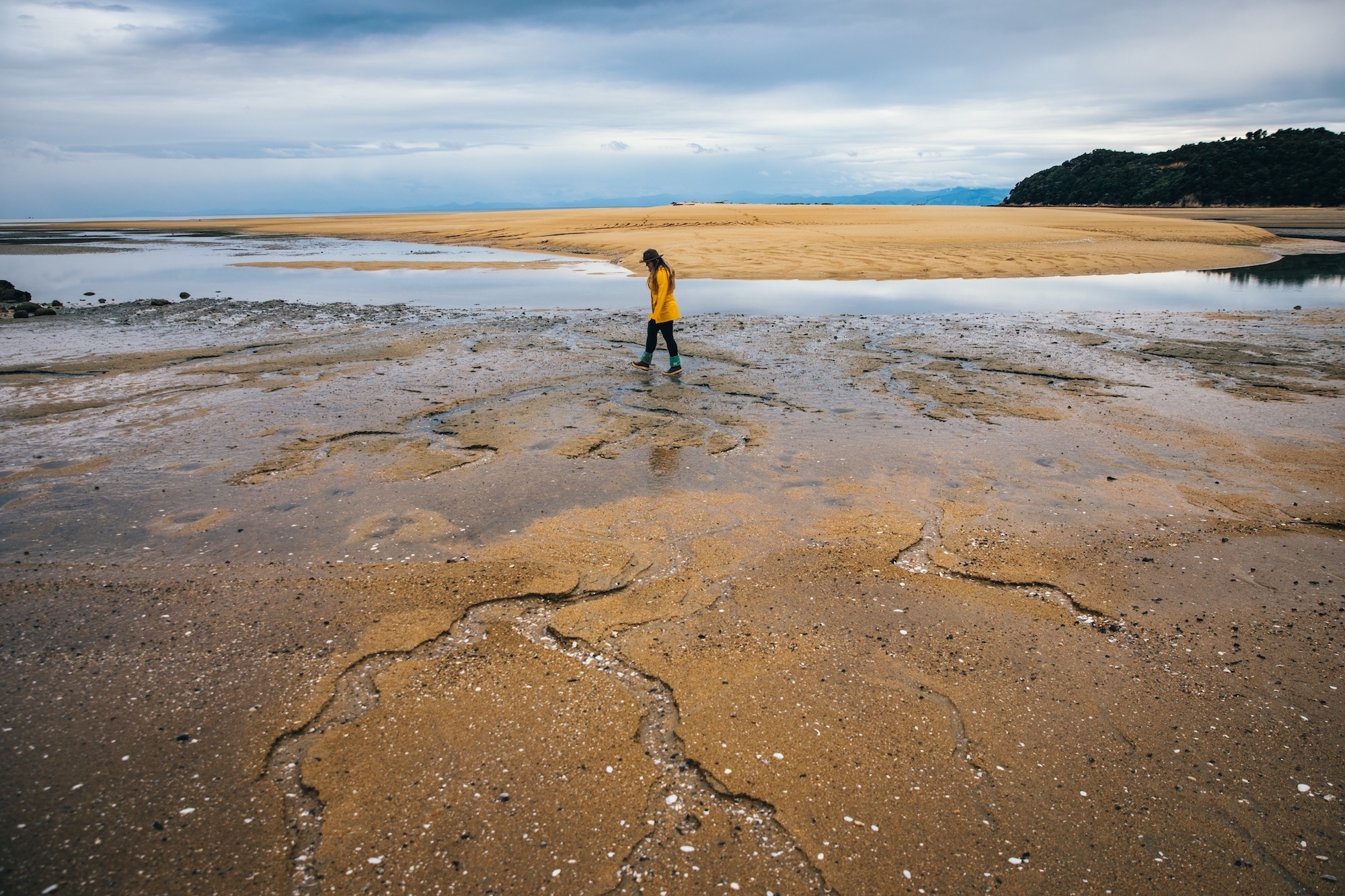
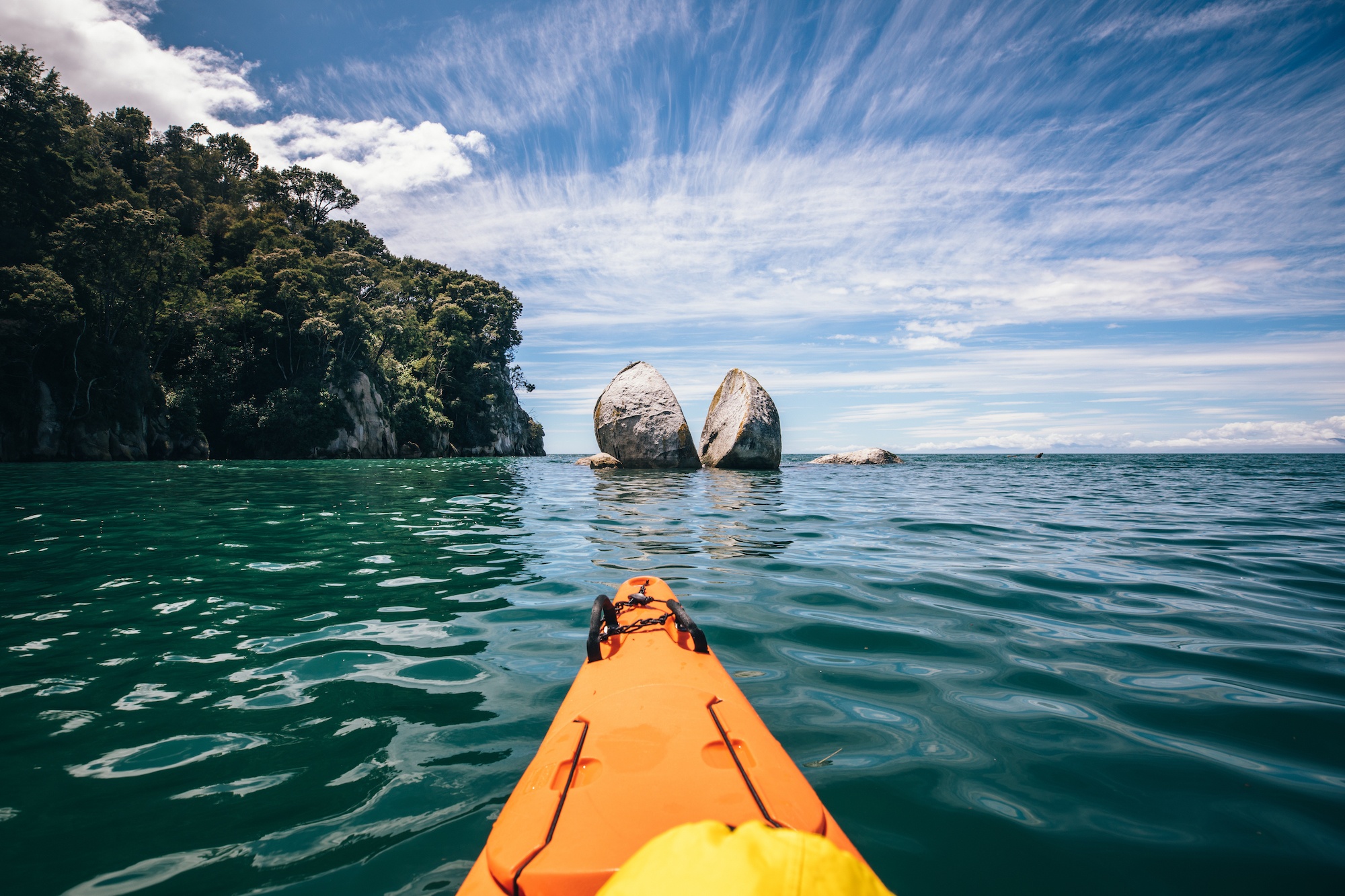
I’ve heard this story many times, with my favorite retelling is of course, by my friend Kyle “Bare Kiwi.”
As I grow older and maybe wiser (?), I try to imagine stories like these through an indigenous lens. Big ships. Guns. Uniforms. Cannons. White Folk. God, it must have been alarming for local Māori to experience this for the first time. And then to see nothing like it for another generation or two. Honestly, why on earth would a cannon ever be used as a greeting? WHY?
There are many theories of why this first meeting between Māori and Europeans ended in bloodshed. Still, considering how hard it is for us to communicate with people today, I’m not surprised.
At least we can be thankful that the name Murderer’s Bay didn’t stick, though Abel Tasman‘s name now graces one of our finest and smallest national parks.
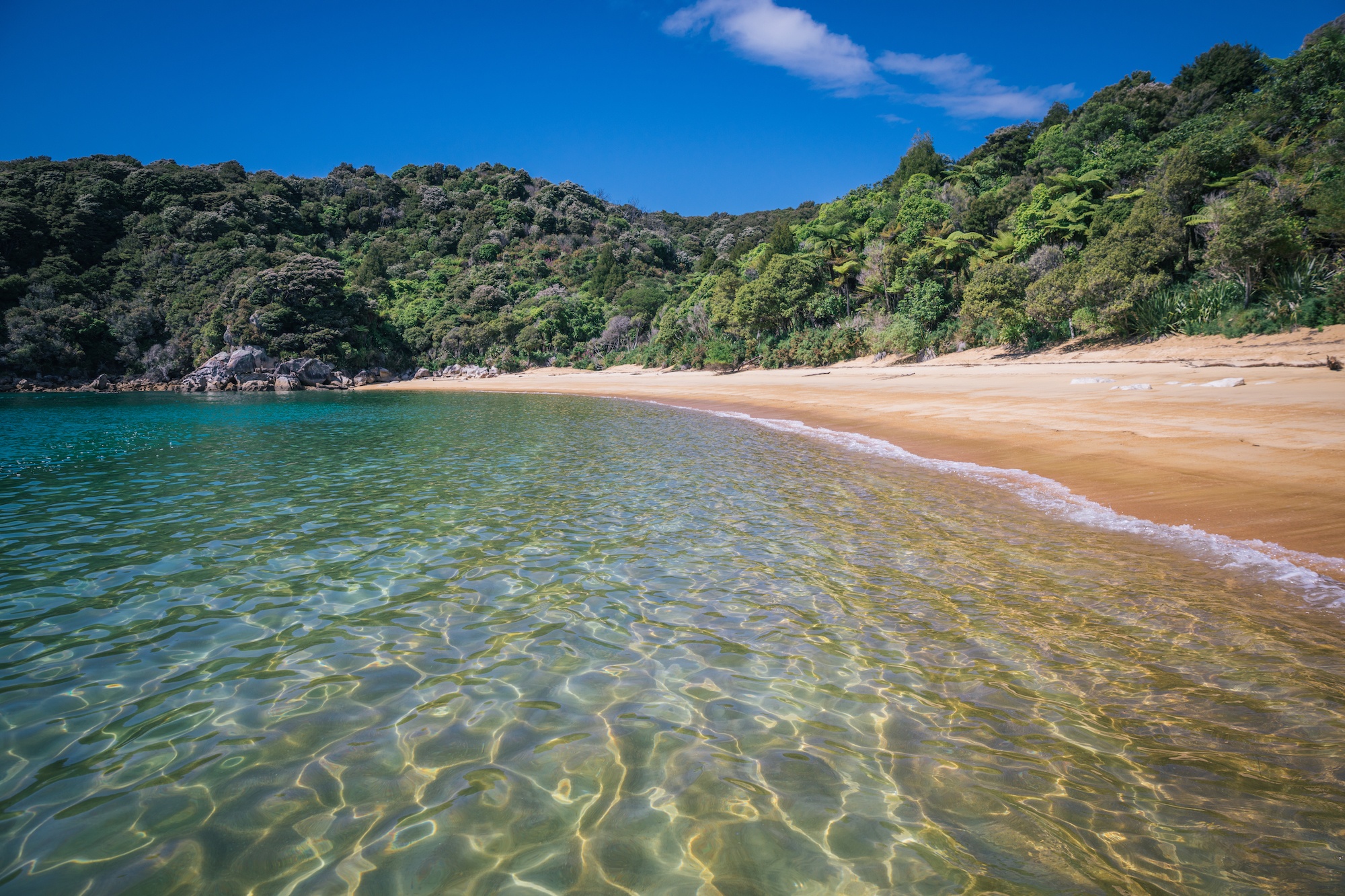
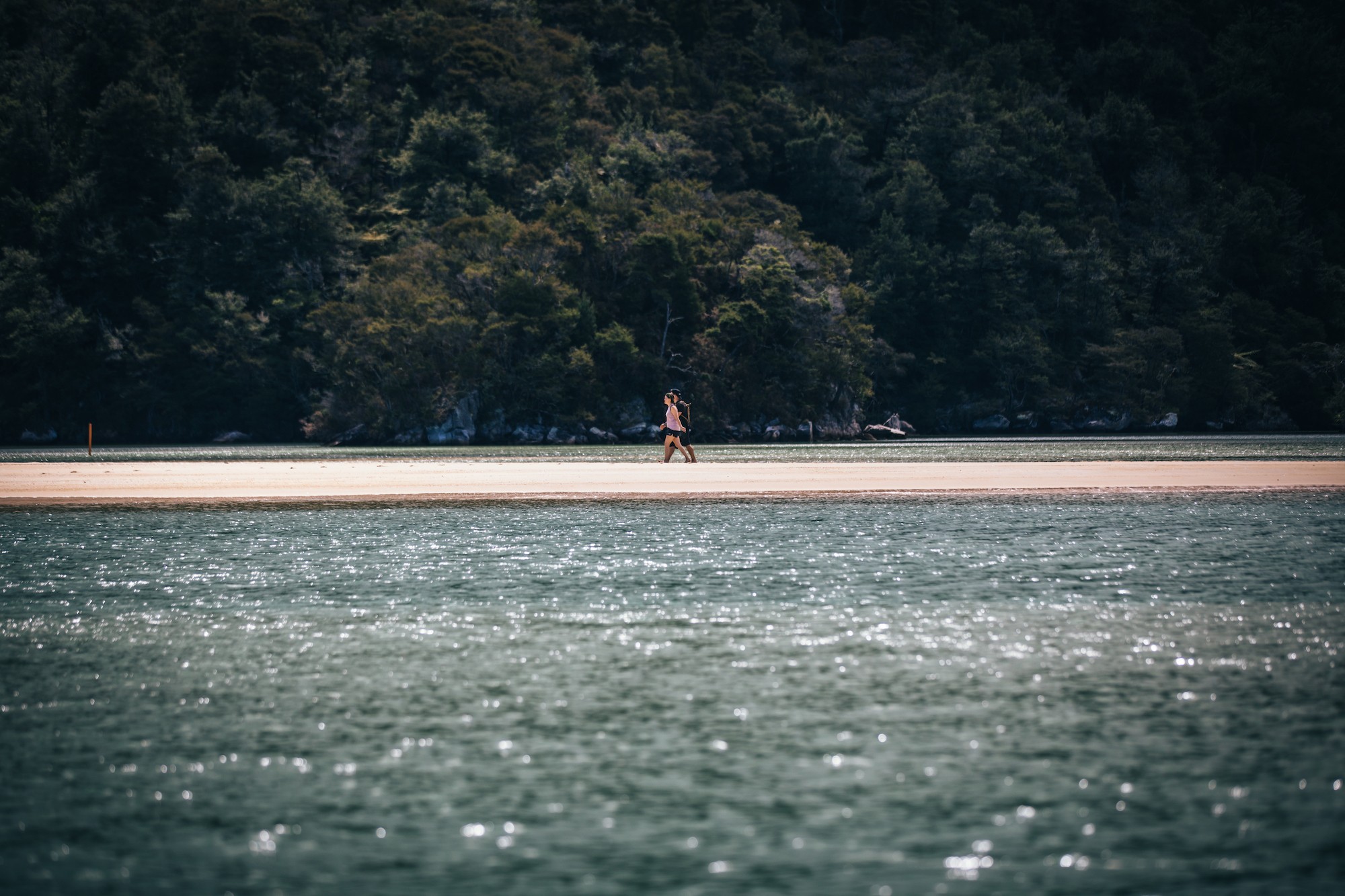
I was lucky enough to spend a week around the Abel Tasman National Park last summer as part of a sustainable tourism initiative.
Here you’ll find a world that is vastly different from how you might imagine New Zealand. Full of inviting tropical beaches tucked in between the native forest and clear blue tides; the national park is as close as pristine as you can imagine. Inviting birdsong echos in the air, and the people consider themselves the guardians of this spectacular natural environment.
Accessible in many ways and home to one of New Zealand’s Great Walks, the Abel Tasman Coastal Track, it’s a part of New Zealand I return to with glee. This time I was lucky enough to bring my partner Giulio with me. A diehard solo traveler, I have come to love being able to share my adventures these days.
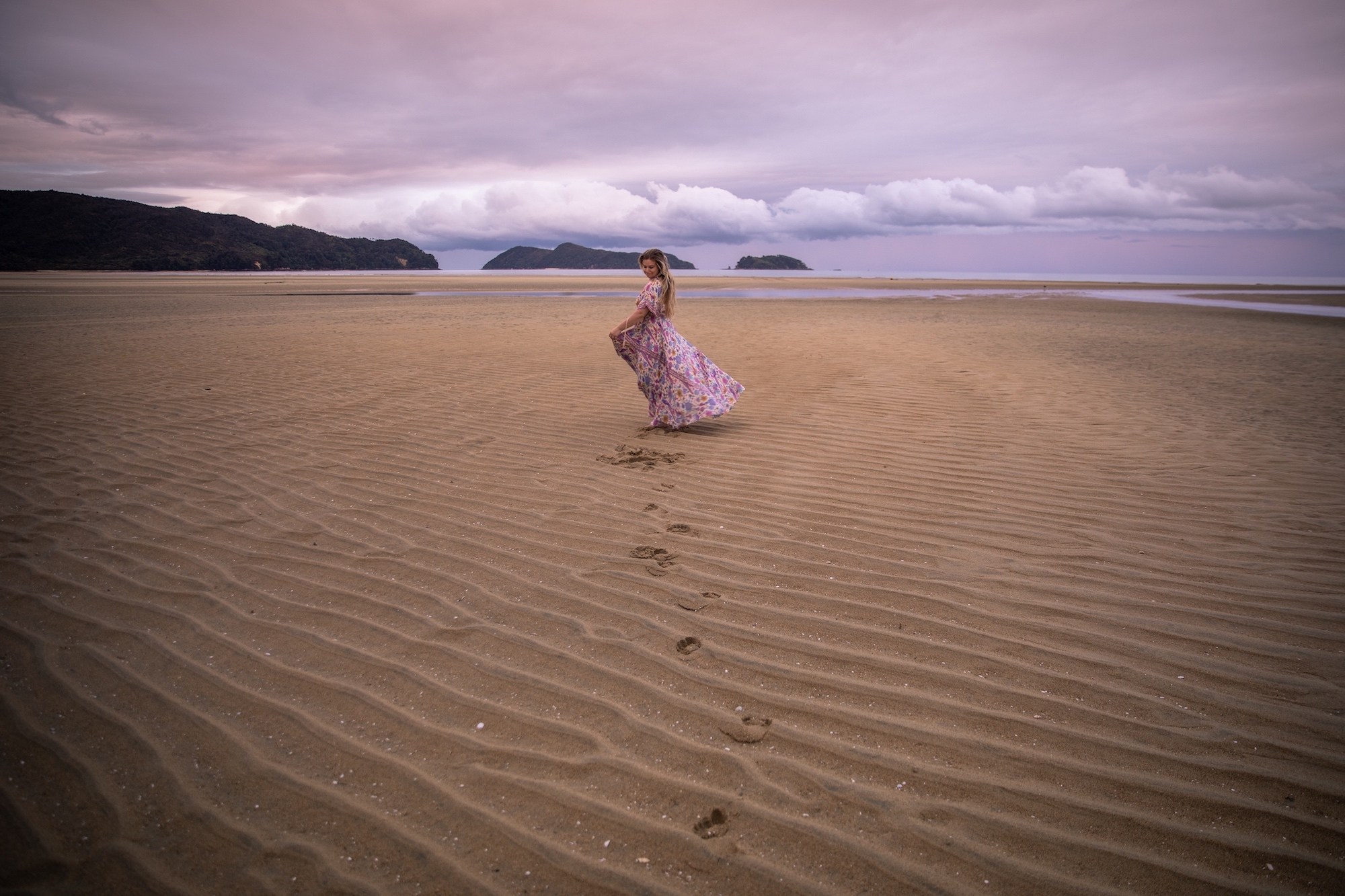
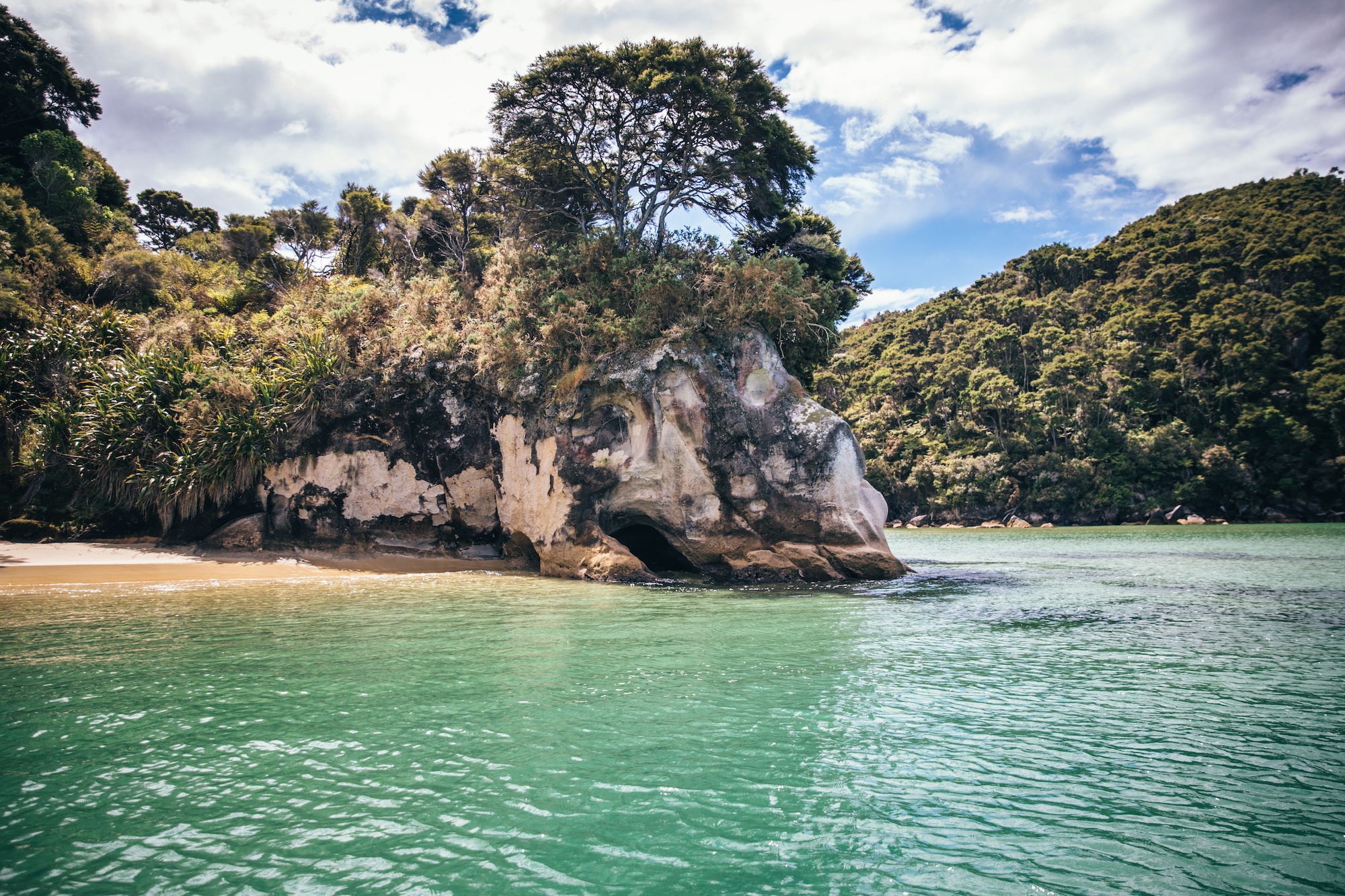
Nelson Tasman is a region on a mission.
With a vision to become New Zealand’s most sustainable visitor destination, they launched a program and itinerary that features local businesses and tourism operators with a light footprint last year. From hotels and lodges that are entirely off-the-grid for New Zealand’s first climate-positive pub, they’ve covered it all.
Many businesses in Nelson Tasman are certified Zero Carbon or Positive. To achieve this certification, they must first measure and reduce their CO2 emissions and offset any unavoidable emissions by buying Carbon Credits. Ekos and Toitū provide Carbon certifications and advice. Sustainable travel in the Abel Tasman is now not only a reality but a priority!
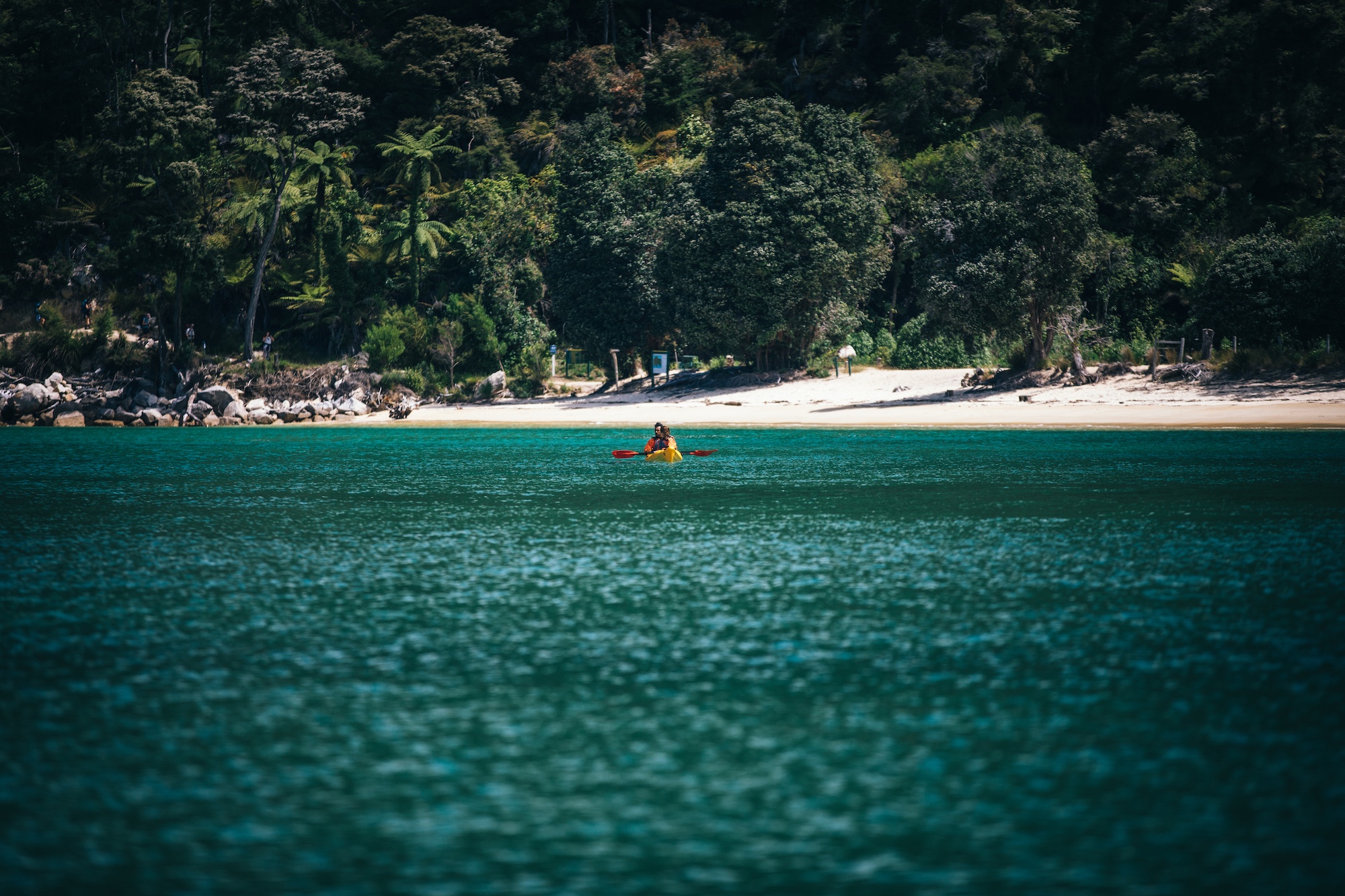
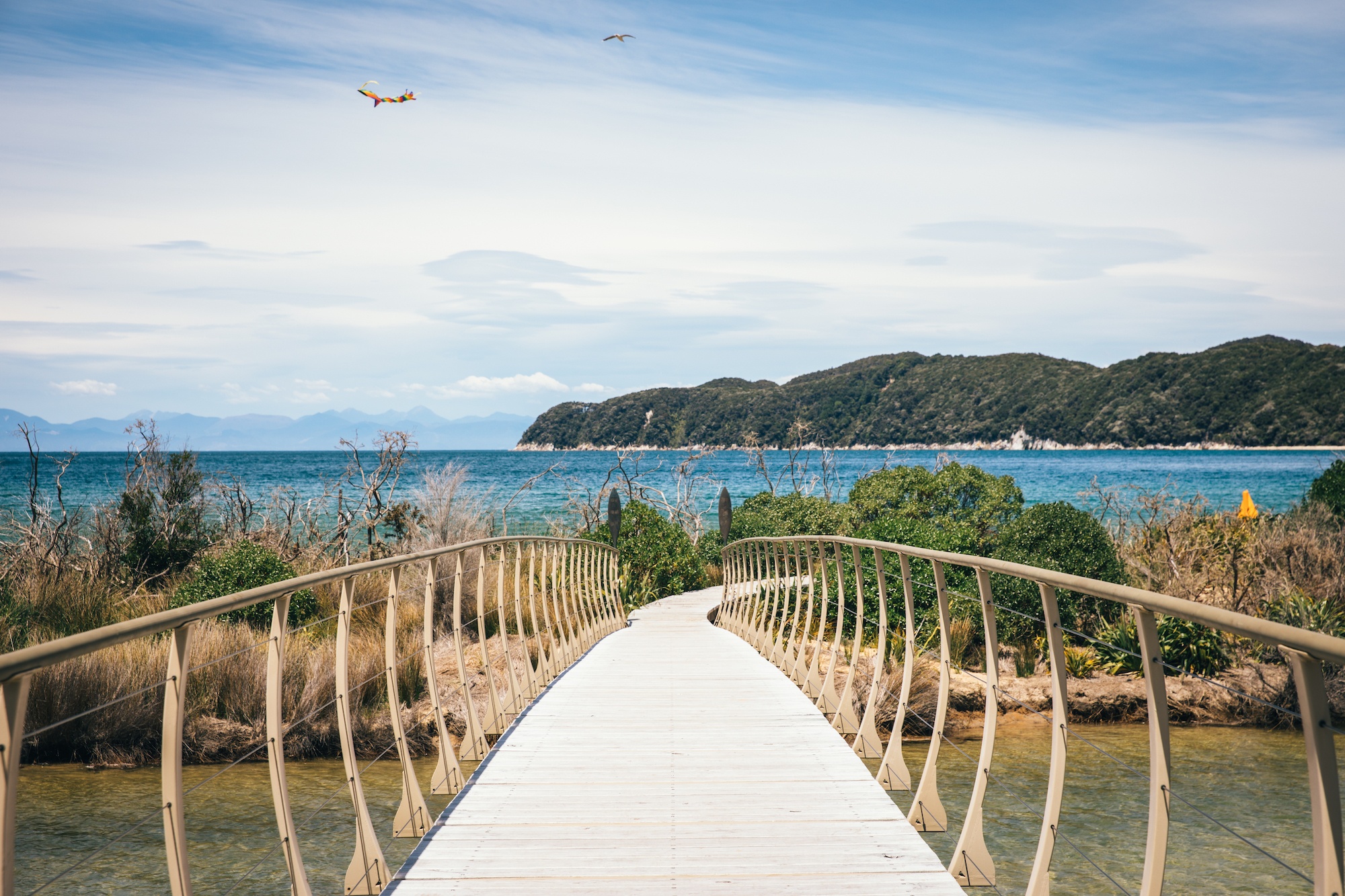
You don’t need me to tell you that this part of New Zealand took a massive economic hit with the pandemic. A trendy place to visit, it’s now very much a quiet seaside spot. So if you’re in New Zealand and keen to have an iconic place to yourself, now’s your chance.
Most of the businesses here are mom-and-pop shops run by locals and families. A fab way to give back is by supporting sustainable travel in the Abel Tasman on your next adventure.
My advice would be to come for at least two nights, but more if you can swing it. Make sure you spend at least one night inside the national park!
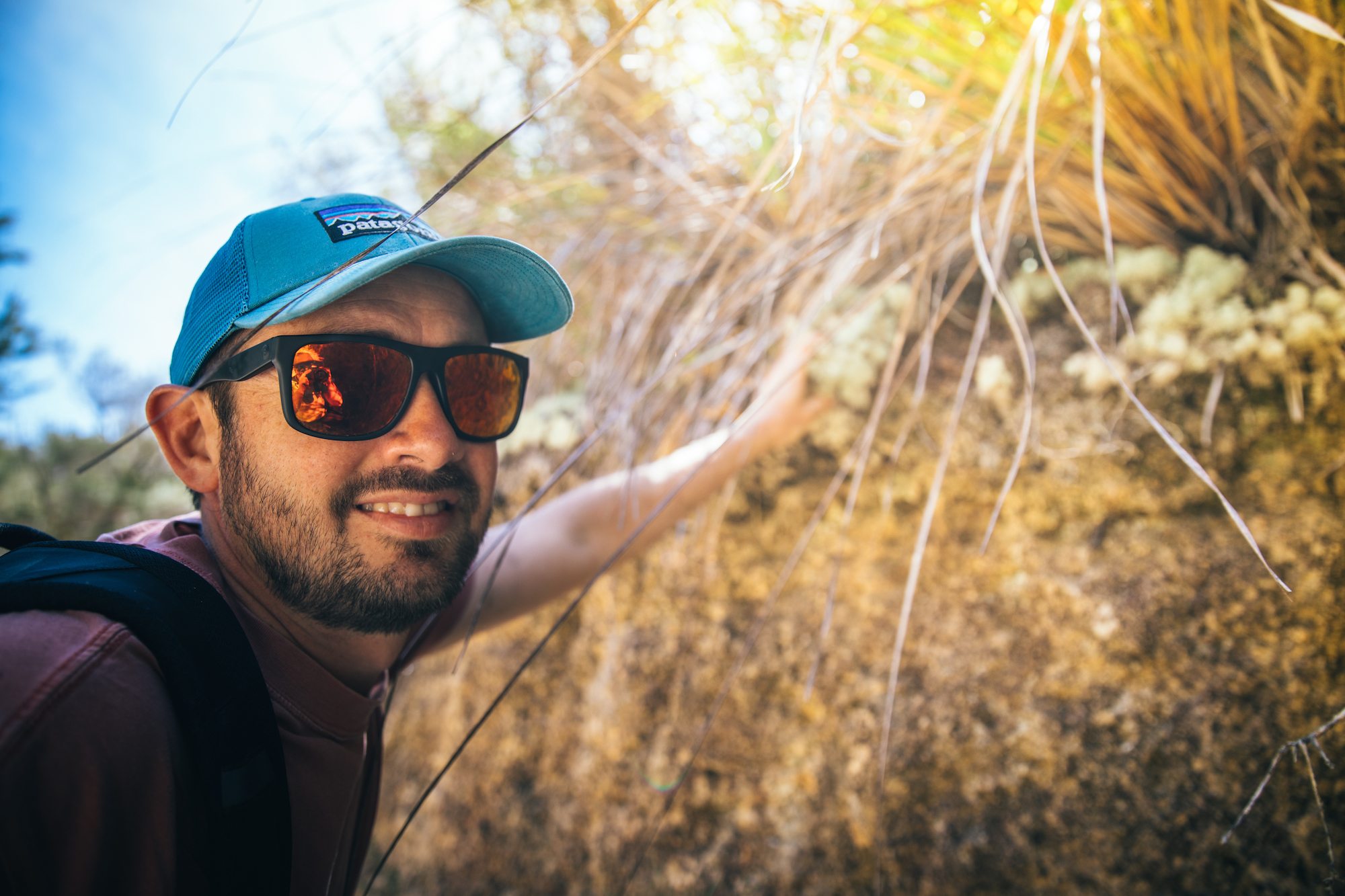
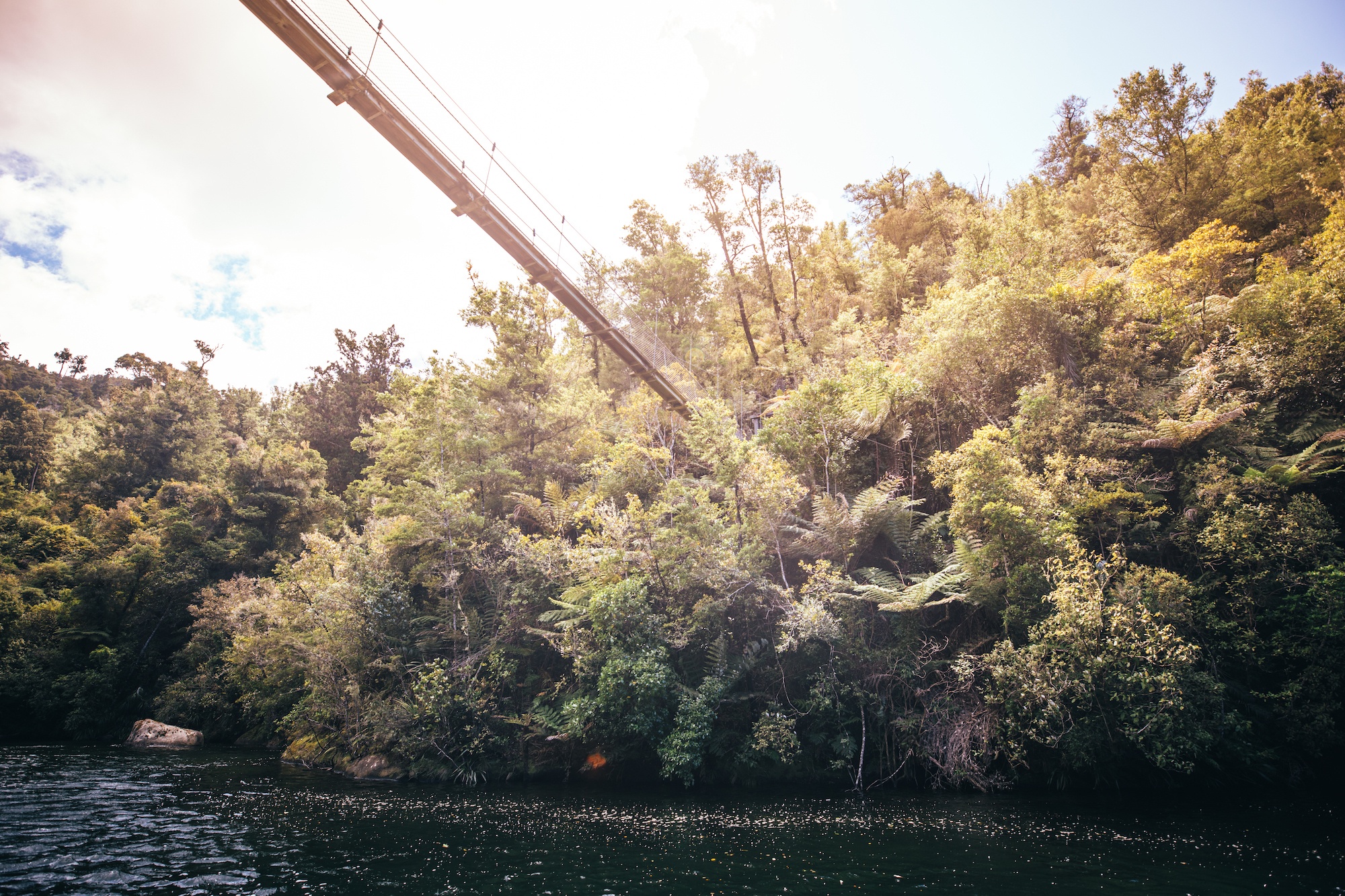
We based ourselves in Marahau, the gateway to the Abel Tasman National Park. Stripping down to tees, we took advantage of the infamous sunshine in the region and hopped into our kayak hires from Marahau Sea Kayaks – a Zero Carbon business.
One of the best ways to explore the area is by kayak. With crystal clear waters, golden-sand beaches, and an endless array of coves and tidal inlets, the Abel Tasman is made for kayak exploration. I’ve done many kayak-guided tours around the Abel Tasman, deep into the national park (though itching to make a 5-day trip!), so this time we opted to go out on our own to the iconic Tokangawhā (Split Apple Rock) near Kaiteriteri.
As its name suggests, it looks like a giant apple that someone split in half. New Zealand always wins when it comes to naming features.
I won’t delve into too much detail, but I will say that sharing a kayak with your significant other certainly is, well, illuminating. Moving on!
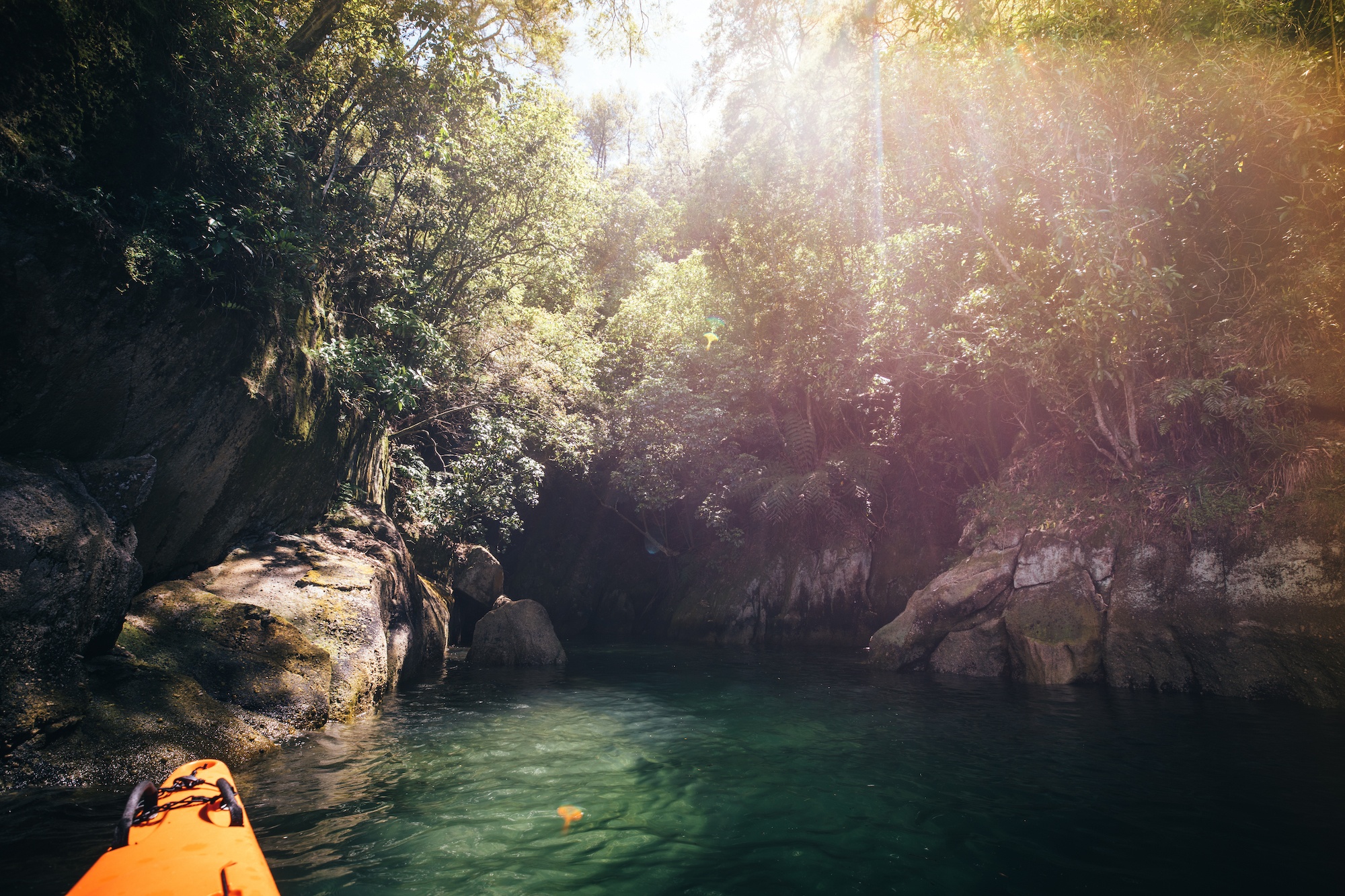
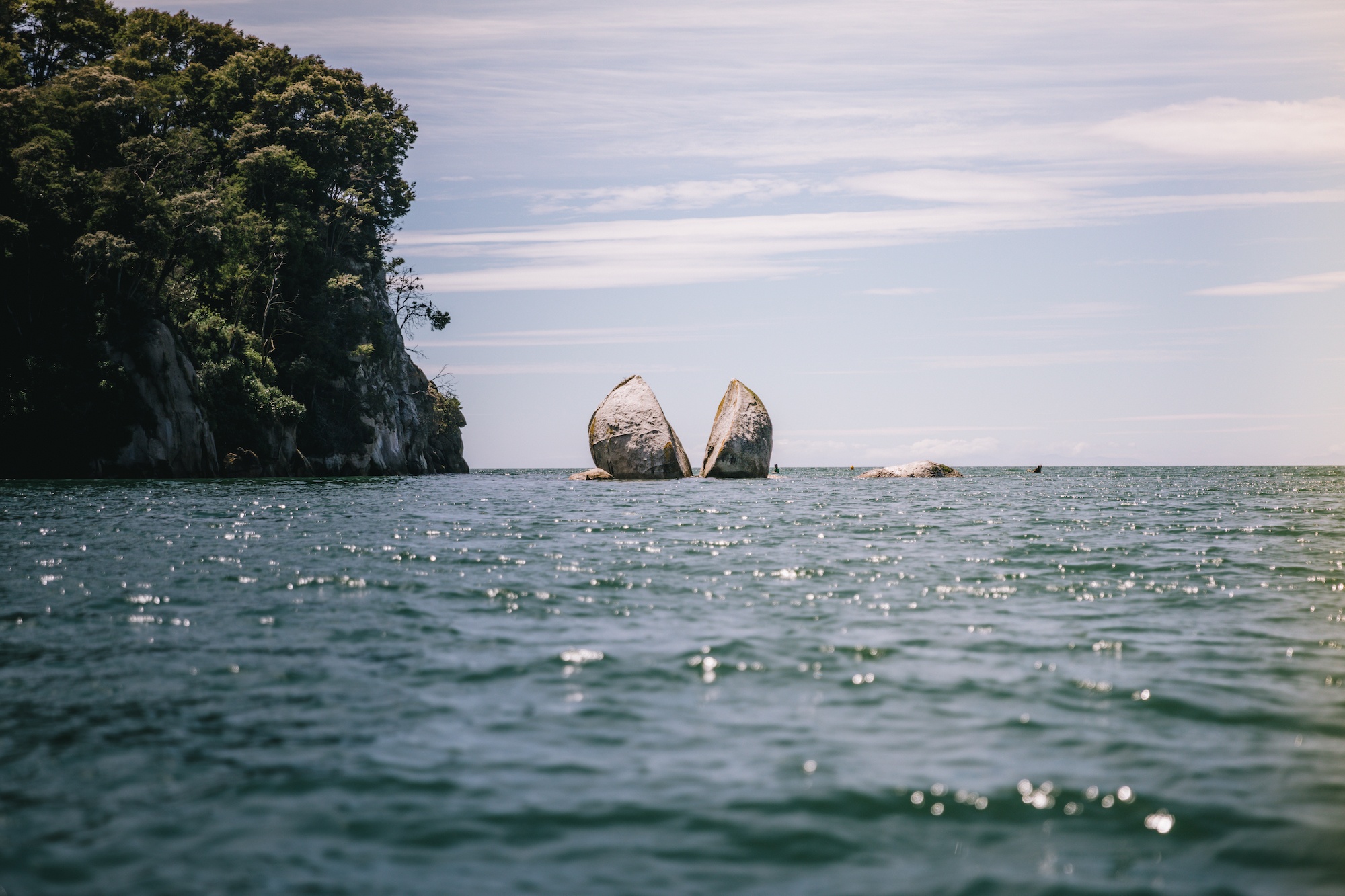
In 2016 thousands of kiwis chipped in to crowdfund millions to buy Awaroa Beach. Right here in the Abel Tasman, it came onto the market for private sale. How cool is that?
Pristine and peaceful, we had the beach to ourselves for sunset.
Besides kayaking and walking, most people get around the Abel Tasman by boat. The Abel Tasman AquaTaxi has been ferrying people around the waters of the park for decades in their wee boats, running on schedule like a bus. This gives you ease and flexibility in exploring the park – you can walk, boat, and kayak your way around to make the most of your time there. They are also certified as Zero Carbon. Boom!
This time around, I was super excited to stay at the Awaroa Lodge on the north side of the park, a place I hadn’t been to yet. It was divine! Surrounded by pristine waterways and native forest, the Lodge makes the most of its secluded location, not accessible by road. The Awaroa Lodge was constructed back in 1990 using natural materials. To this day, it still has a solid focus on maintaining low environmental impact. For example, they generate their own power and contribute to a range of conservation groups.
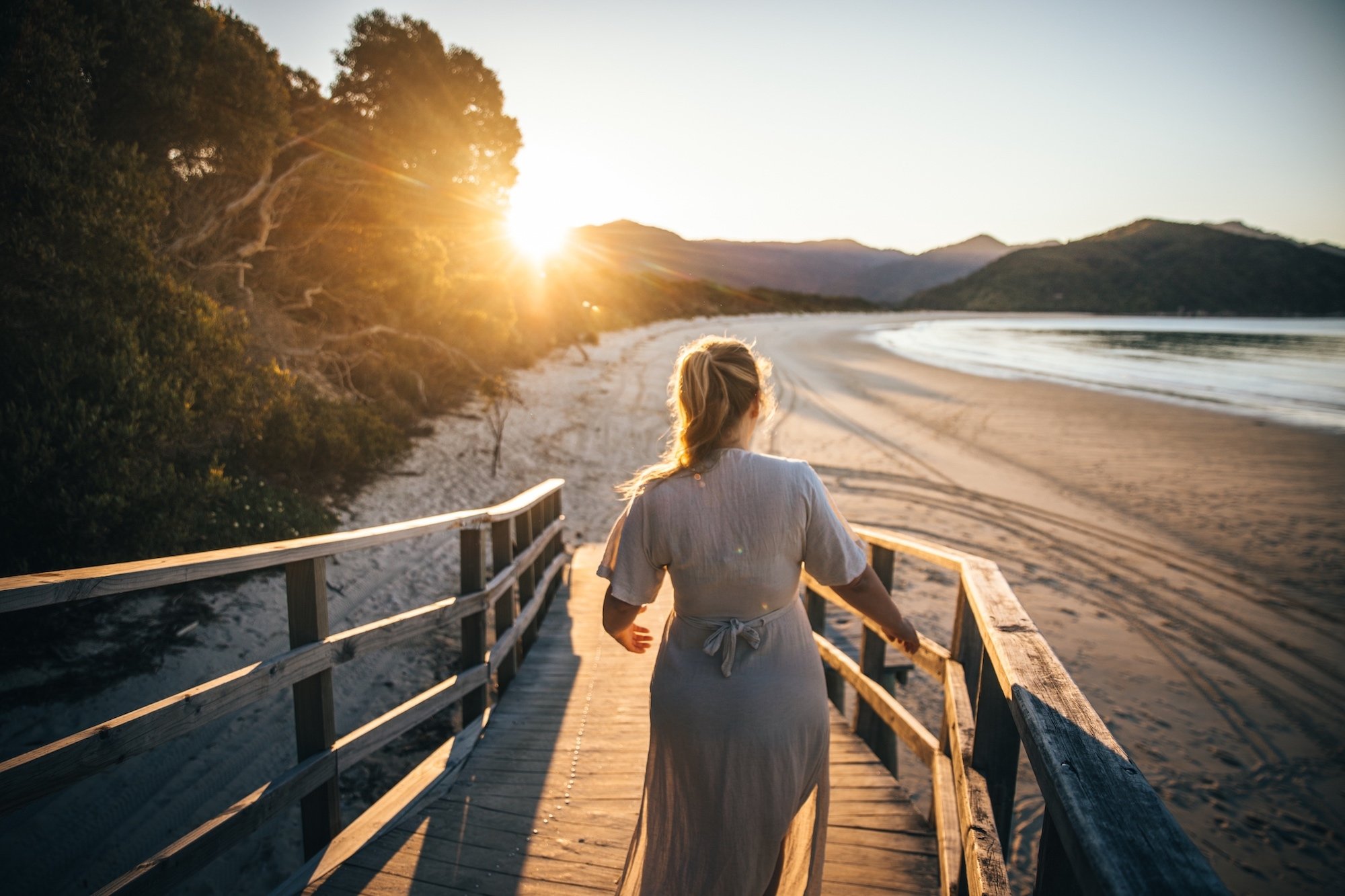
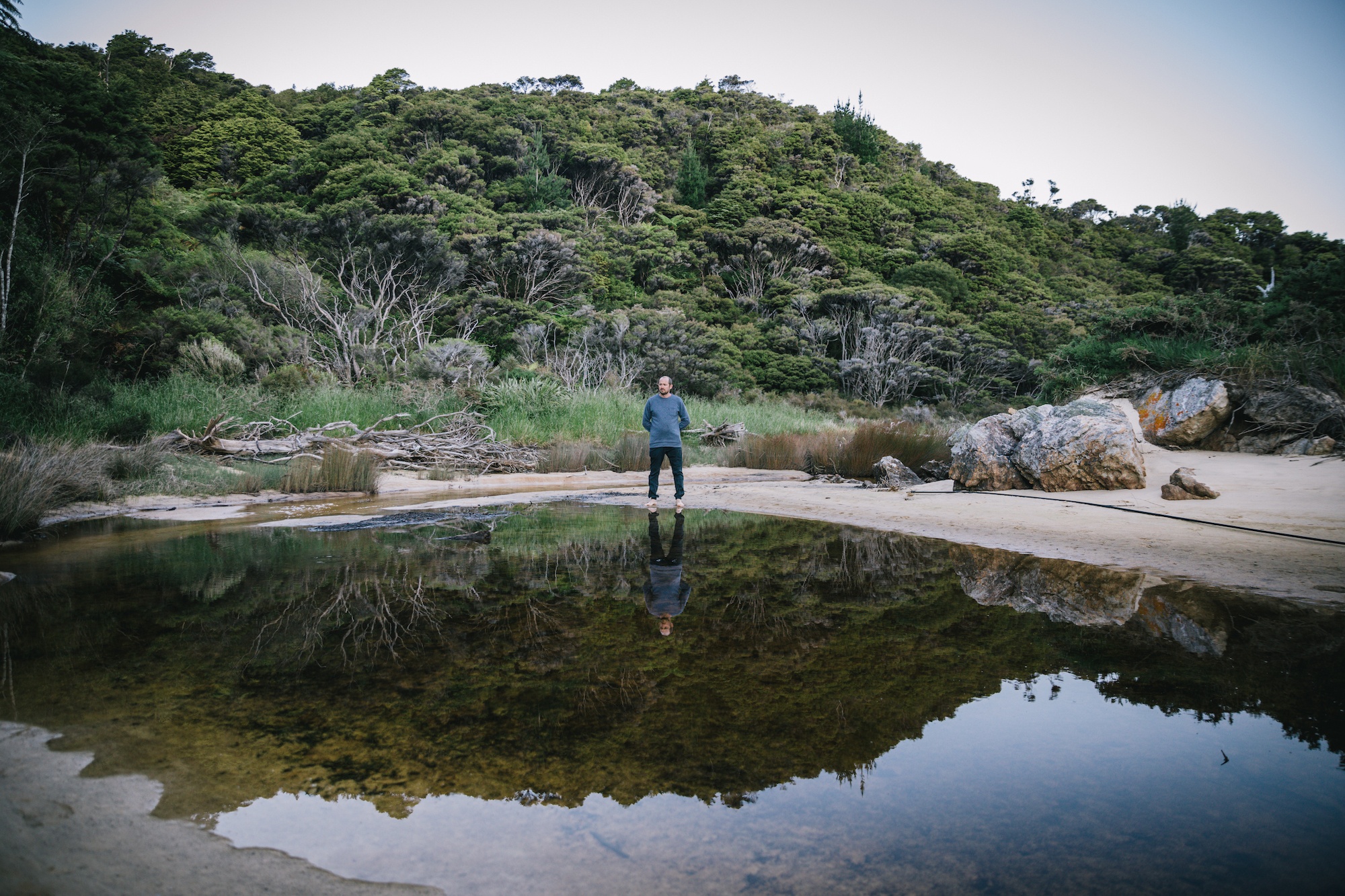
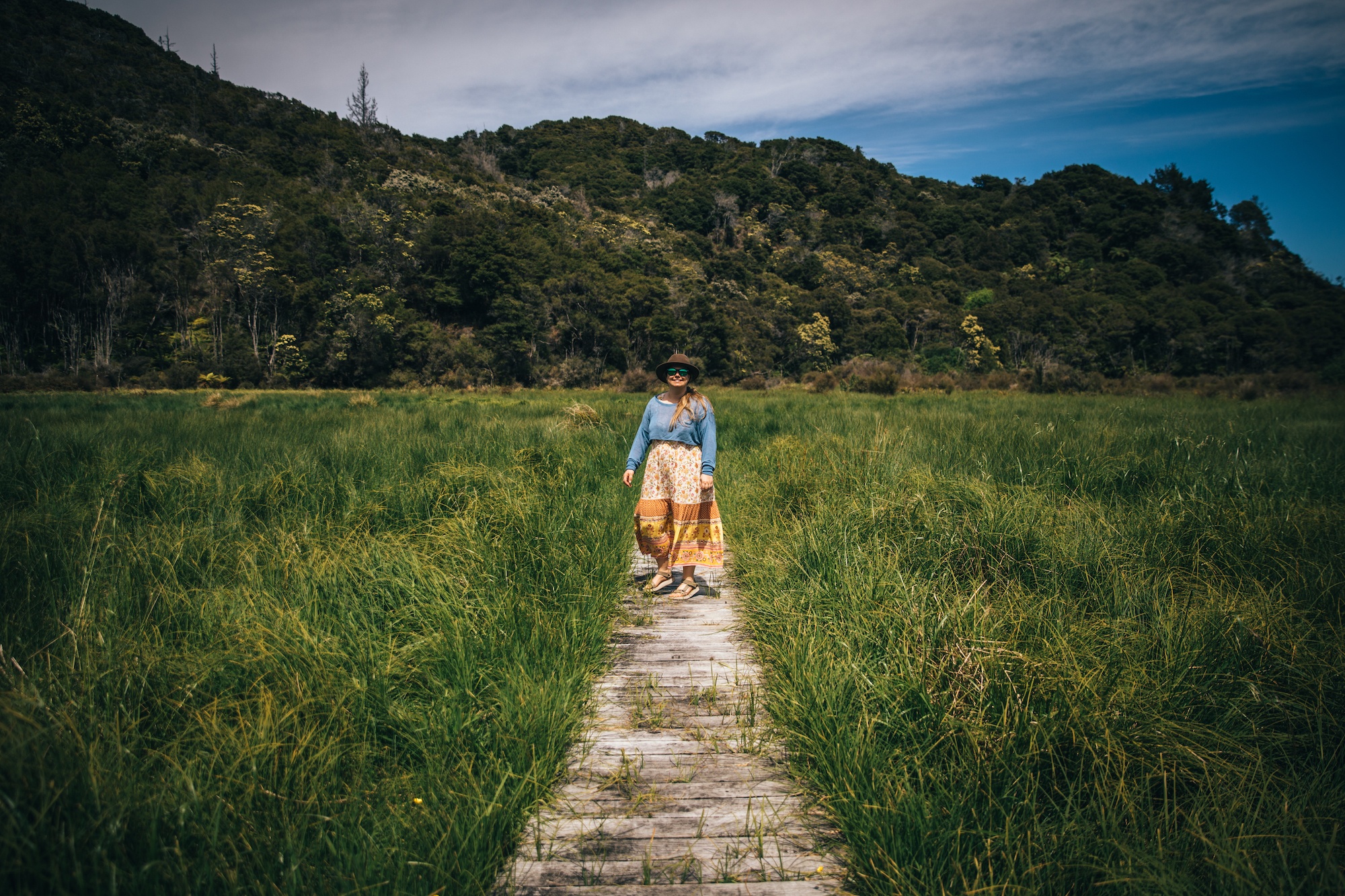
Giulio and I walked part of the Abel Tasman track down to Bark Bay before boating back to Marahau.
For the rest of my time in the Abel Tasman, we checked into the Marahau Beach Camp. A family-owned and Zero Carbon business, it was a classic spot to stay. Along with the nearby eatery Hooked on Marahau (also Zero Carbon), their focus has shifted towards sustainable travel in the Abel Tasman. Whenever I’m in the area, I have always popped in here for my morning coffees and evening meals. After a long day walking in the sunshine, it was the perfect spot to grab a hot feed and beer!
Over the past few years, they have invested heavily into reducing their carbon footprint (energy efficiency, fuel efficiency, waste management, etc.), and any remaining emissions are offset through the Uruwhenua Regenerative Forest project in Golden Bay.
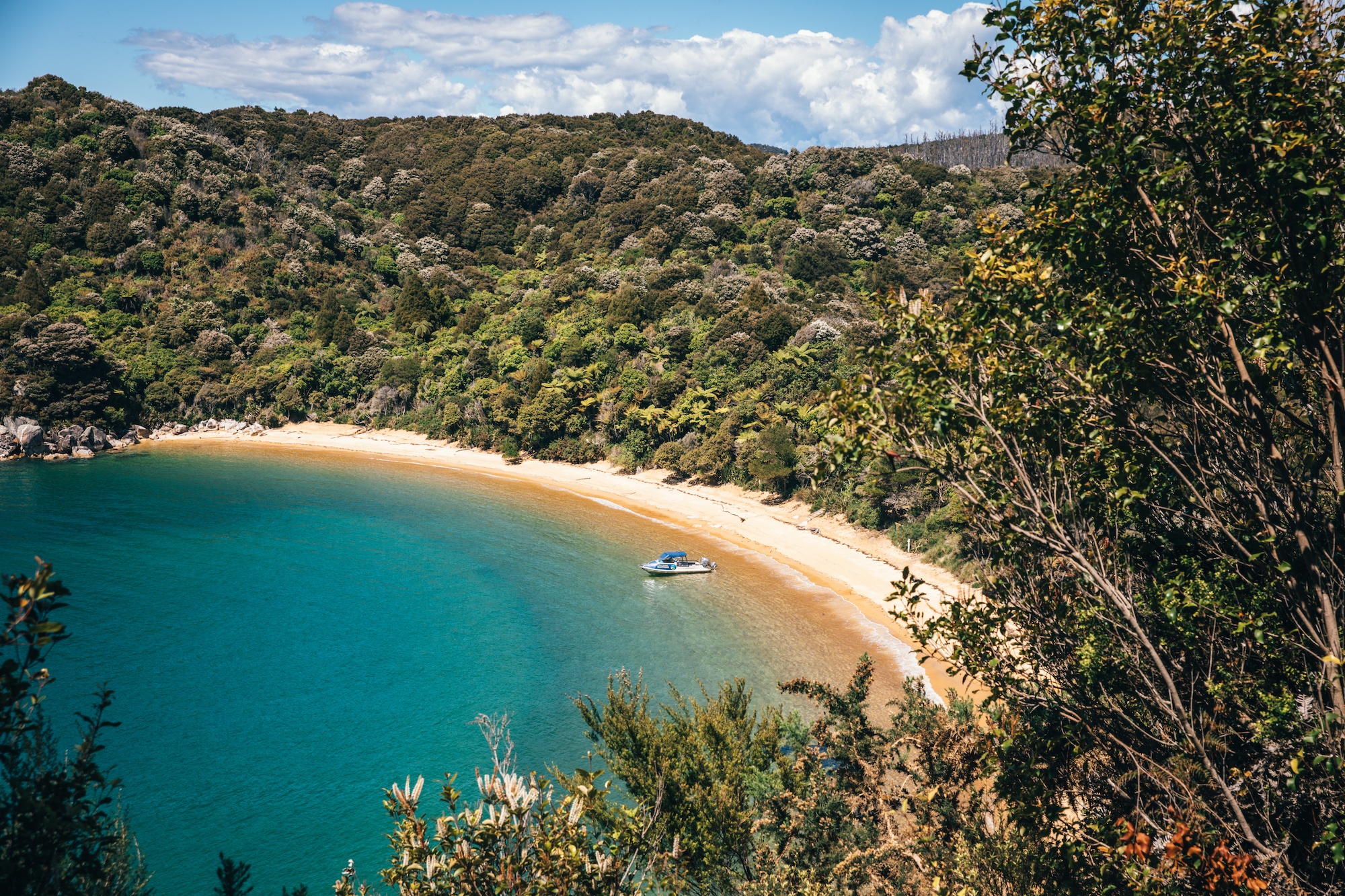
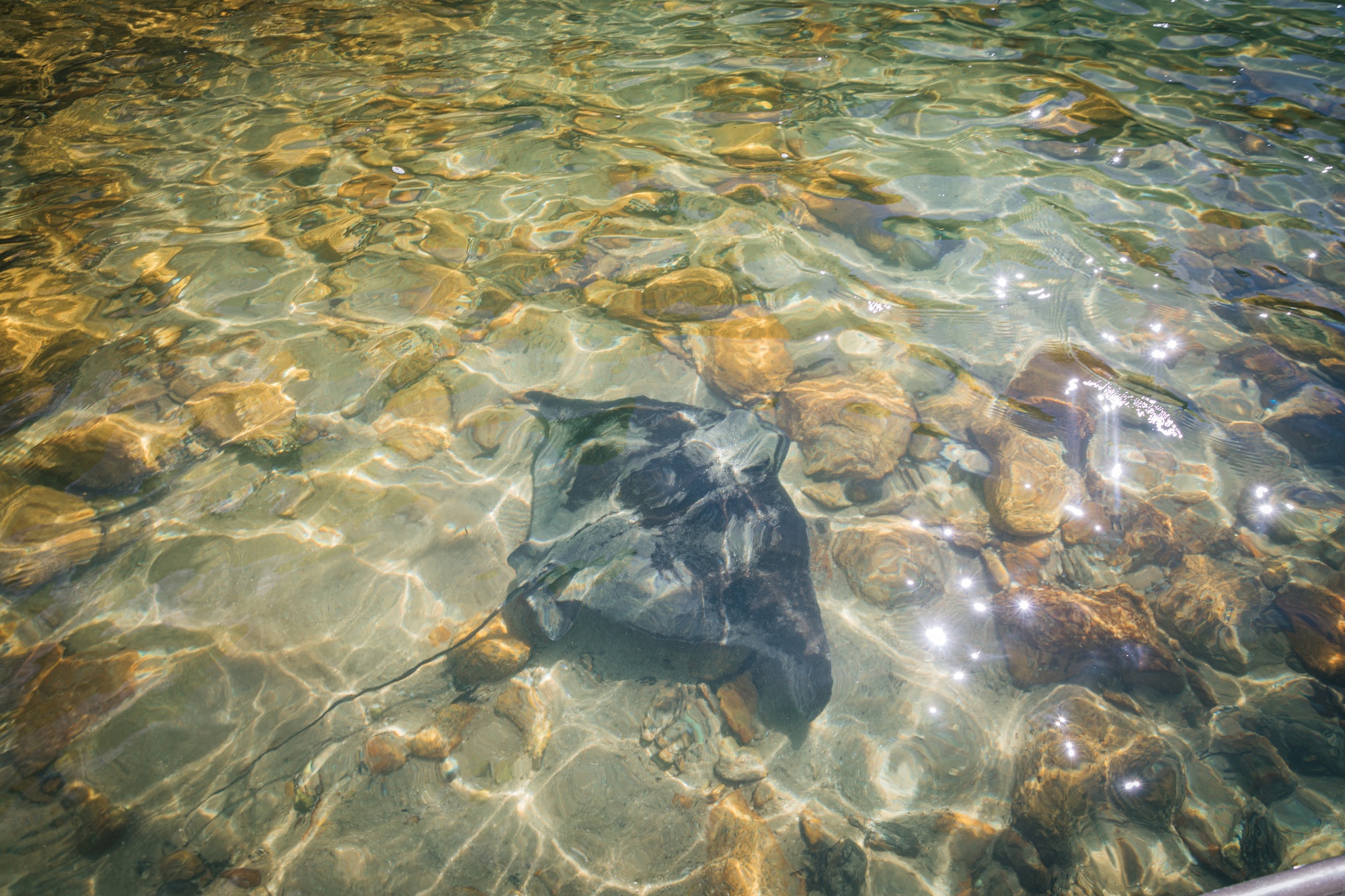
Years ago, on a photoshoot for a major client, I spent the day out in the park with Abel Tasman Eco Tours, and it’s still one of my favorite activities. Since 2013, they have been a leader in sustainability, advocating for environmental protection in the park and improving their performance (read more here). With a strong focus on sustainability and reducing their carbon footprint, they are always going the extra mile to conserve our natural resources and wildlife. They even coordinating a range of beach/marine clean-ups throughout the year.
It’s impressive to see a brand champion tourism this way!
I spent the day con the water, learning about the fantastic conservation initiatives and sustainable travel in the Abel Tasman.
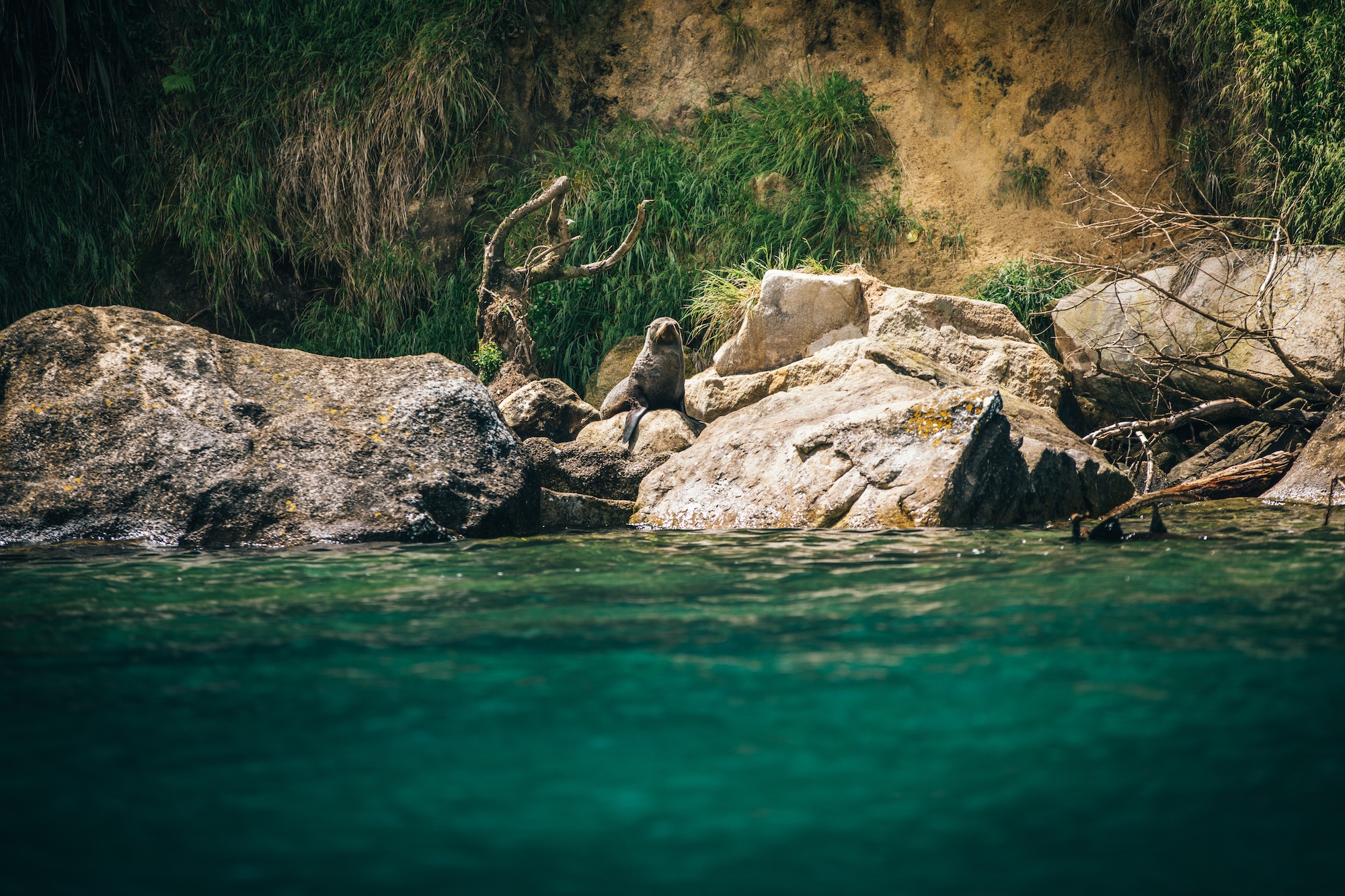
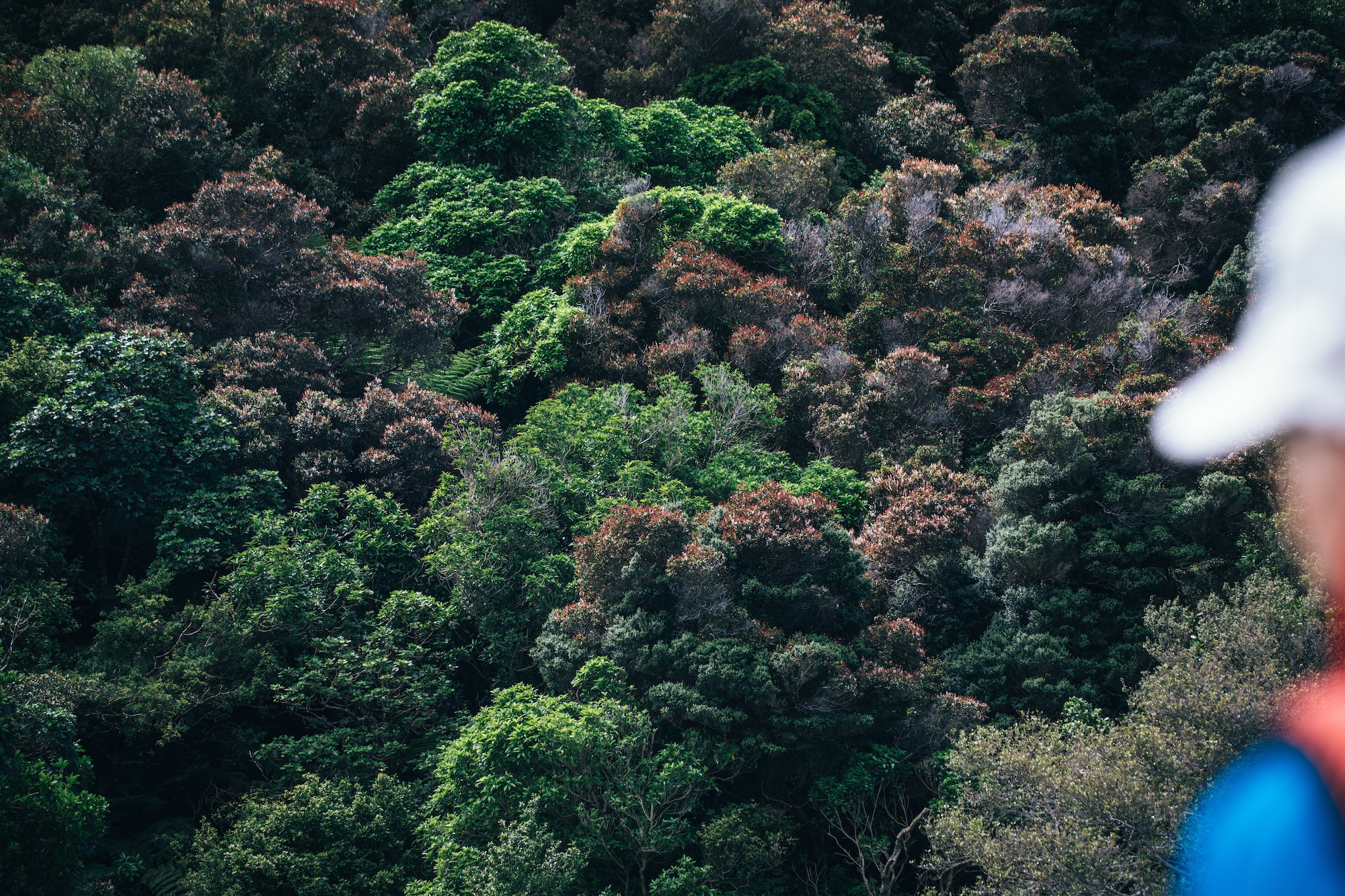
Sure, I love walking and traveling independently. But I also equally enjoy hopping on activities like this where my curious mind can absorb all of this new knowledge and experience. I’m a big advocate for continuing to upskill, especially when it comes to being a more responsible traveler. When you know better, you do better, after all!
If you’re keen to learn more about giving back to this spectacular corner of New Zealand, I’ve put together some resources for you below. Several sustainability initiatives look after the Abel Tasman National Park, along with DOC, of course. They work to restore and protect the native plants, birds, and wildlife in the park.
Have you been to the Abel Tasman National Park? Were you aware of this kind of sustainable travel in the Abel Tasman? Do you support carbon-neutral businesses while on the road? Spill!
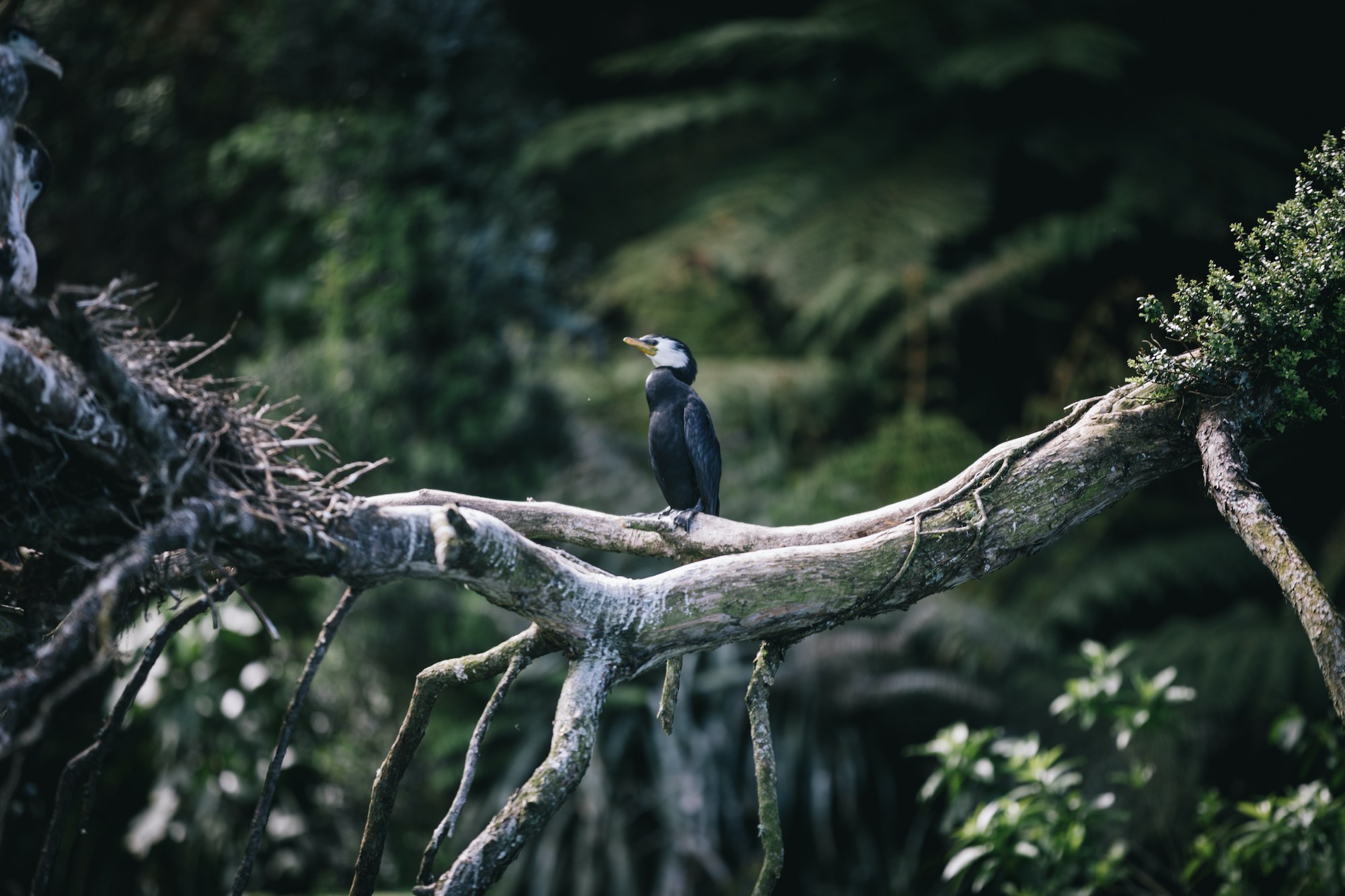

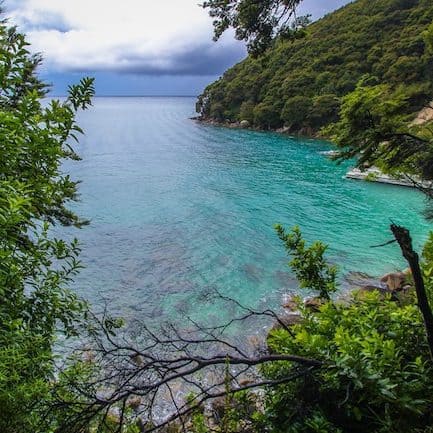
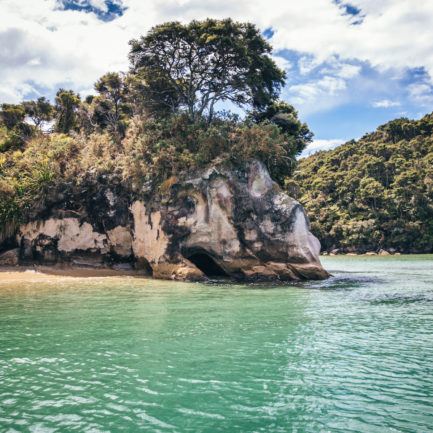
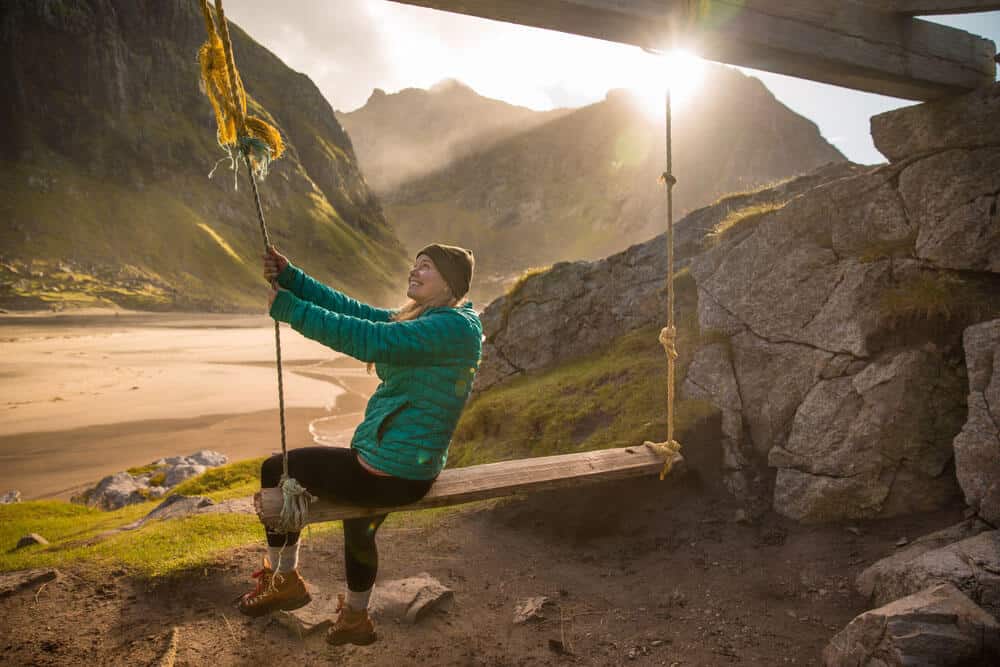
such a wonderful place we also want visit there. Amazing location.
thanks!